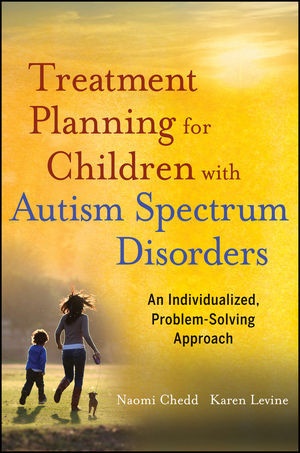Read more
Informationen zum Autor Naomi Chedd, LMHC , is a Licensed Mental Health Counselor and an Educational Consultant in private practice. She specializes in the behavioral, social/emotional, and mental health issues related to children and adolescents with Autism Spectrum Disorders, Prader-Willi Syndrome, and other developmental disabilities. Karen Levine, PhD is a Licensed Psychologist and Instructor of Psychology in the Department of Psychiatry at Harvard Medical School. She was co-founder and co-director of Boston Children's Hospital's former Center for Autism and Related Disorders Clinic and worked in the field of developmental disabilities for twenty-five years. She is the 2012 recipient of thefirst Lesley University Austim Hero Award. Klappentext A new way of thinking about treatment planning to support children with autism spectrum disordersGrounded in solid theory, Treatment Planning for Children with Autism Spectrum Disorders: An Individualized, Problem-Solving Approachhelps educators and therapists who work with children with autism spectrum disorders make sense of this confusing, often conflicting, and rapidly evolving clinical and research treatment landscape.Rooted in evidence-based practices, Chedd and Levine provide a 7-step dynamic treatment planning process. The book shows how a variety of current interventions and treatments can be incorporated into this process and includes applications of different approaches for tackling different problems. The nine illustrative case vignettes cover a wide variety of ages, developmental challenges, learning and social profiles, and school and family circumstances.With a firm commitment to and focus on the child's best interests as well as family needs and preferences, Treatment Planning for Children with Autism Spectrum Disorders offers professionals new possibilities for enhancing the quality of life for children with ASDs. Zusammenfassung Diagnoses of autism in children are on the rise, and while some clinicians have training and experience in this area, the majority does not. This book reviews a variety of interventions and treatments that can be used with children who have autism spectrum disorders. Inhaltsverzeichnis Preface xi Acknowledgments xv About the Authors xvii 1 Introduction: Looking at Treatment Planning Through a Different Lens 1 Defining Best Practices 2 Media Overload 3 A New Way of Thinking About Autism Treatment 4 Core Deficits of Autism 5 How the Book Is Organized 5 Why There Is Confusion About Evidence Based Practice in Treating ASD 5 Case Studies 8 About the Appendices 10 2 What Is Evidence-Based Practice? 11 What Is So Important About EBP? 12 Common Errors in Evaluating Treatments 12 Correlation Versus Causality 13 Determining Treatment Effect When the Child Is Receiving Multiple Treatments 14 Emotions Versus Logic 14 Face Validity 15 How Can Treatments Be Evaluated? 16 History of Evidence-Based Practice in Psychology 17 Brief History of EBP and Autism 18 Evolution and Expansion of EBP 20 EBP as it Pertains to Autism 22 Clinical Judgment 23 Autism-Specific Versus Nonspecific Treatments 24 The Evolution of Treatment Models and Terminology 24 Client Voice in What to Treat and How to Treat 27 Family Preferences 31 What Is Important to Study? What Is Important to Treat? 32 The Role of Context in Treatment Selection 34 Positive and Negative Policy Implications of Uses of EBP in Autism Treatments 35 Conclusions and Recommendations 37 3 The Individualized, Problem-Solving Treatment Process 39 Our Beliefs and Biases 41 The Role of Children's Emotions 43 The Challenge of Generalization 44 Strengthen...

